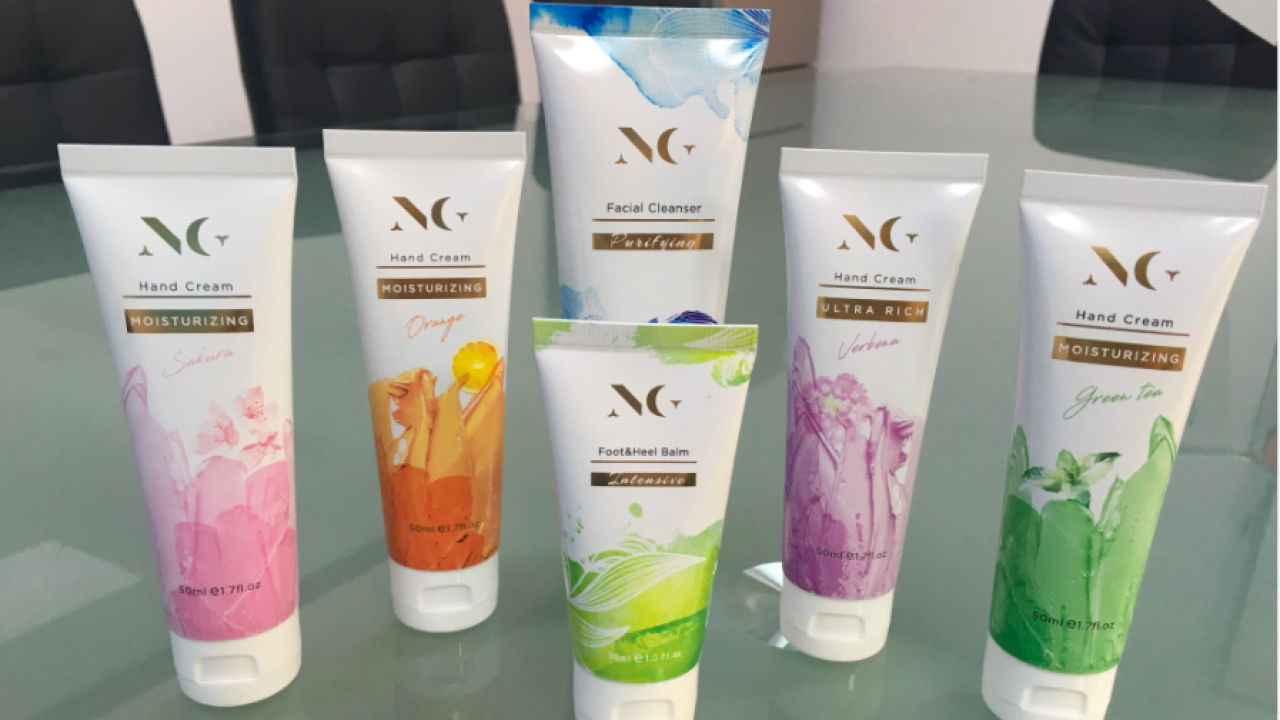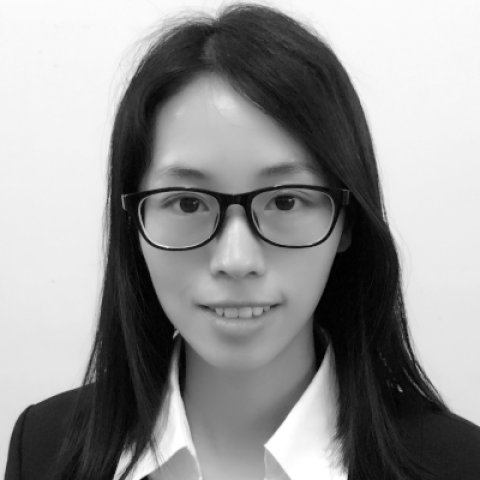Chinese converters share digital experiences

Dongguan Sunway: digital in-mold label
Established in 1998, Sunway now owns a workshop with an area exceeding 10,000sqm with approximately 300 employees. The company started out as a supplier of a range of consumables and software to label printers and officially entered the label printing industry in 2001. Now its main products are electronic tags.
In 2012, Sunway installed its first digital press, an HP Indigo ws4500. ‘At that time, orders of less than 300 meters accounted for 25 percent of our total business volume,’ says Weber Hu, Sunway general manager. ‘Along with a higher demand for personalized products, the number of short orders continually increased. Our profit margin reduced considerably using conventional printing equipment, and we even lost money on those orders. What’s worse, some orders carried a lead time reduced from two weeks to 2-3 days, and it’s impossible to produce in that time frame with conventional presses.’
Following further business growth, Sunway purchased its second digital press in 2015, an HP Indigo 6800. The two digital presses were producing 160 batches of small and diversified product orders a month, exceeding 2 million labels.
Sunway did encounter problems producing e-tag products on the digital press. E-tags are characterized by a wide range of product sizes and material types, and because they are constantly updated, there is an increased workload for pre-press, including document processing and typesetting. In addition, the substrates, printing inks and vanishes used in digital printing must pass strict electronic safety and security standards and tests before being put into use.
‘We tried different varnishes and materials before we found the best combination of ink and varnish which finally met the e-tag test requirements regarding abrasive resistance, high temperature resistance and aging resistance,’ adds Zeng Hongbin, Sunway marketing manager. Sunway is investing more than 1 million RMB a year in the certification of the digital manufacturing process for e-tags.
‘But on the whole, the efficiency and cost advantages of digital printing have successfully saved us time that conventional presses wasted on manufacturing short and medium orders,’ says Weber Hu. It has also optimized the company’s production structure and greatly improved productivity. In 2016, Sunway’s annual output value increased to 15m RMB.
As well as short notice and small run orders, Sunway has also explored new business opportunities in household chemical labels, where the company’s digital label products have been successfully applied in in-mold PP label production. ‘Today this is still a local initiative and the products are mainly sold to overseas markets such as Japan,’ says Weber Hu. ‘But we believe domestic demand will gradually increase in the future.’ The success of digital in-mold labels has strengthened Sunway’s determination to pursue digital printing opportunities further.
Shenzhen Jingyuan: VIP + laser holography for security labels
‘We were the first buyer of the HP Indigo 6900 digital press in China following its official launch in March 2018,’ says Wu Shiyong, general manager of Shenzhen Jingyuan. The investment in this new digital press has had a great significance for Jingyuan’s future development.
Established in 2001, Shenzhen Jingyuan is a laser hologram security product manufacturer. ‘To be honest, the price of this new HP Indigo 6900 digital press was equivalent to the total price of all the other equipment in our company. Therefore many peers felt confused about our investment,’ says Wu Yongshi. ‘Though our laser holography security label belongs to the label market segment, up to now we actually have never been involved in the label printing field. This new HP digital press is a flag indicating that we will officially set foot in label printing.’
Laser holography originated in the United States at the beginning of the 1980s and entered China in the mid-1980s. It was being applied in the security and anti-counterfeit fields in China as early as 1988. After almost 30 years’ development, laser holography has become a more mature technology and its security applications have been widely accepted.
In recent years, variable data anti-counterfeit technology allied to the internet has attracted more and more attention. ‘Supported by the internet, variable data anti-counterfeit will inevitably become a new kind of security technology, utilizing Big Data to include production, storage, distribution and so on,’ says Wu Yongshi. ‘Digital printing is the best way to realize these possibilities.’
In the first month after installation, the HP Indigo 6900 digital press accomplished more than 500,000 runs and produced almost 40,000sqm of labels with variable data. But that’s not enough for Jingyuan. ‘Our real target is to create a new security model, “Variable data + laser holography”, which overlaps and integrates the new and old anti-counterfeit technologies.’
When L&L asked for an update on this project, Wu Yongshi says honestly: ‘It’s a great idea but we still need to solve some problems with technical integration. For example, we still lack digital printing experience. Less than two months after the installation of the HP Indigo 6900 we are still trying to familiarize ourselves with the materials and the manufacturing process. For example, the width of most laser holography materials is 170mm while that of the digital press is 340mm. And there are also issues when switching between the two print processes.
‘I’m sure we will make breakthroughs which solve such problems and figure out our own growth path as the industry transitions to digital.’
Shenzhen Xiushun: separate small orders for higher yield
Established in 1998, Shenzhen Xiushun owns a workshop with a floor space of 2,600sqm and employs around 70 people. It mainly produces labels for the food industry, household chemicals, electronics, toys and medicines. It specializes in barcode labels, PET/ PVC/ film labels, special high and low-temperature resistant labels and anti-counterfeit void labels.
Last June, Xiushun installed its first digital press, an HP Indigo 6900, and started its ‘conventional + digital’ production system. ‘We chose the HP Indigo 6900 mainly because it will take on the current load of small and scattered purchase orders going through the business,’ says Zhang Hongsheng, Xiushun founder and general manager.
As a traditional label manufacturer, these kinds of orders occupied almost 40 percent of Xiushun’s total business volume. ‘Some people may think it a kind of waste to produce these small orders with a high-end digital press,’ says Zhang Hongsheng frankly.
‘Most converters use digital presses for labels with high margins and high added-value, such as customized and variable QR code labels.
‘But our huge customer base is still influenced by traditional concepts, and such orders and consumer demands have not yet burst into our current market. If we dedicated the HP Indigo 6900 specifically to such orders, we are afraid it might be idle for most of the time.’
Indeed, this is a common reason many label converters give for hesitating to choose a digital press.
Zhang Hongsheng is one of the first batch of true Chinese label experts. He entered the label industry as early as 1993 and set up his company Shenzhen Xiushun in 1998. Then he purchased successively a Lintec letterpress machine, Weigang semi-rotary offset press and Gidue Combat M5 flexo press, among other machinery investments. ‘Frankly speaking, we have met challenges as the China label industry has transformed,’ says Zhang Hongsheng. ‘In my view, a converter can’t rely on any one piece of equipment, such as a digital press, which is merely a new production method. Company leaders should keep a keen eye on market trends and try to develop a plan for the next 3-5 years based on this.’
From the point of view of label end users, the post-1990, 2000s and even 2010s generations are gradually becoming the main force of consumption. This is causing the China label market to fragment into segments, and along with fast-changing internet technology and a shorter product update cycle, will create opportunities for digital printing technology. These opportunities will be focused on small and multiple SKU orders, customized printing and variable data printing. ‘Understanding these tendencies, we need to become familiar with digital technology now, then we will be well positioned to grab market share when these demands burst out in the future.’ This is the real reason that Xiushun purchased its digital press.
Up until October 2018, Xiushun’s HP Indigo 6900 has printed more than one million labels. The company increased output by at least 20 percent at its current facility because of savings made in time and labor costs by separating out the small orders. This flexible printing system will keep improving the company’s core competitiveness.
Wenzhou Haoge: timeliness and differential development
The founder and general manager of Wenzhou Haoge, Zhang Xiancang, says: ‘Established at the end of 2009, Haoge introduced its first digital press, an HP Indigo ws4500, in our second year. So you can say digital printing technology accompanied all our history and will be in our future growth plans.’
Currently, Haoge’s major products cover a wide range of applications including variable data anti-counterfeit labels, customized tamper-evident labels, multilayer labels, scratch off labels, scratch cards, vouchers and promotional gifts for domestic and foreign customers. Around 70 percent of the converter’s total business uses various types of PS labels.
Zhang Xiancang paid attention to digital press developments even before Haoge’s foundation. ‘I was engaged in platemaking and laser phototypesetting pre-press jobs before the establishment of Haoge, therefore I already knew well the demanding requirements in this industry. Especially at the stage of sample making before final production, customers may refer back to different design ideas and to alterations of previous designs. With a digital press, I realized we could save much time and provide a faster turnaround printing model.’ Zhang Xiancang explains that this ‘timeliness’ was the key reason they chose the digital press.
During its installation and operation, Haoge developed plenty of label concepts which fully played to the value of the digital press. ‘At present our digital press is mainly used for manufacturing variable data labels and differential label types which can’t be produced by a conventional press.’ Along with an increase in short and medium-run orders, Haoge has also moved products from the conventional to the digital press. Zhang Xiancang explains that this is not a straightforward process, as it means considering the customer’s acceptance of the print quality, how raw materials selection will be affected and what will be the difference in color gamut, lead time and post-press processing. ‘For our older customers their products have already established quality and test standards for conventional presses, and they have to renew the whole process when those labels are transferred to the digital press.’
He cites the example of one product owned by Yunnan Baiyao which was produced on a conventional press and later by digital. This required establishing new standards for the production process, appearance (color, overprinting etc), ink adhesion and so on. In the area of digital ink adhesiveness, Haoge tried different varnishes and laminates as well as post-press processing looking for ways to improve the product’s performance.
As for the comparison between conventional and digital presses, Zhang Xiancang says: ‘The two processes use different inks and printing methods so the final printing result can’t be the same, and currently available technology will not change this. However, the overprinting accuracy and color stability of digital have been widely accepted by our customers.’ He also tells L&L that many customers are actively seeking to try the digital press.
So far, Haoge owns five HP Indigo digital presses, including one ws4500, two 4600s, one Indigo 5600 and one Indigo 6800. ‘Digital presses now contribute 35-40 percent of our total business,’ says Zhang Xiancang. ‘As we expand, Haoge will keep on paying attention to conventional and digital printing technologies to explore the unlimited potential it offers.
Stay up to date
Subscribe to the free Label News newsletter and receive the latest content every week. We'll never share your email address.


